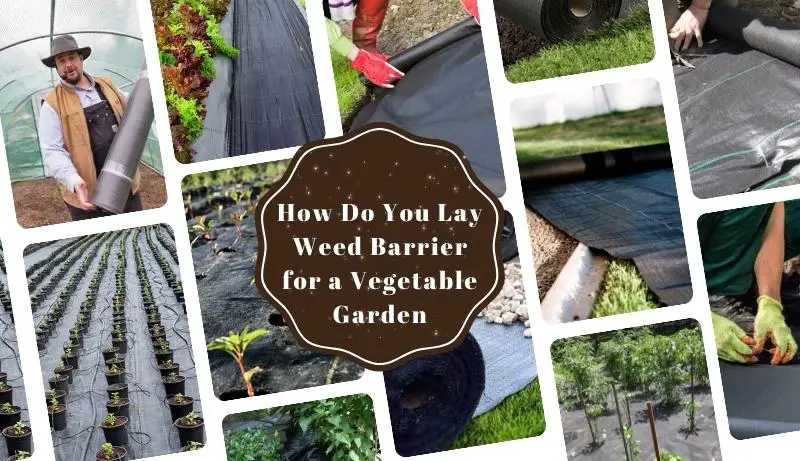Have you spent the entire year removing weeds? If so, consider laying a weed barrier to prevent growth.
The simplest and frequently used method to combat weeds is to lay down the garden cloth. It stops weed seeds from falling to the ground and taking root or from sprouting in the soil.
Additionally, landscape fabric is “breathable”. For that, it allows nutrients, water, and air to seep into the soil and nourish plants.
Nevertheless, many out there, including beginners might find the procedure intimidating.
Don’t worry! We have got your back! In this article, we will share expert methods to make installing weed barriers simple.
Stay with us as we take you through the process of laying the weed barrier for your garden!
Is It Beneficial to Install a Weed Barrier in a Vegetable Garden?
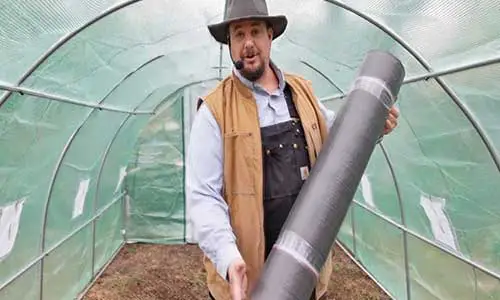
The majority of weeds and lawn grasses are kept out of the garden bed by weed barriers. That significantly reduces the amount of weeding required.
Depending on the type of barrier and way of installation, you can eliminate weeds. Weeds may still be able to root in the soil above despite barriers placed beneath the surface. This is a common phenomenon in a vegetable garden.
Barriers placed on top of the soil prevent practically all weed growth. Besides, it aids in the retention of moisture, reducing the frequency of irrigation.
Also Read:
- Make sure you also check our guide for Weed Barrier for Vegetable.
- Additionally, you can check our blog on Is Landscape Fabric Safe for Vegetable Garden?
Types of Weed Barriers
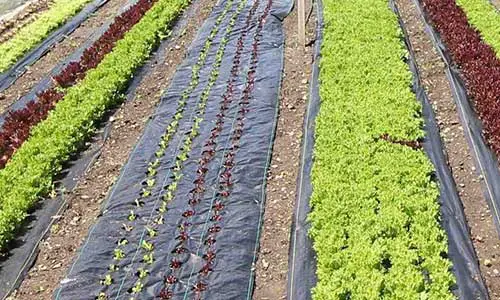
In raised beds, landscape cloth is frequently placed below the soil and lasts up to five years. It isn’t appropriate for usage above the soil.
However, vegetable plants are replanted annually and causing them to tear. Weeds can grow out through these tears.
Plastic mulch protects the soil’s top layer and lasts for around one season. That makes it an ideal surface barrier for vegetable beds. Nevertheless, you will need to renew the barrier every year.
You can also create a barrier by layering newspaper or cardboard (not the glossy pages). You can do that either below or above the soil. Although these disintegrate quickly, the dissolving paper helps the soil.
How Do You Lay Weed Barrier for a Vegetable Garden?
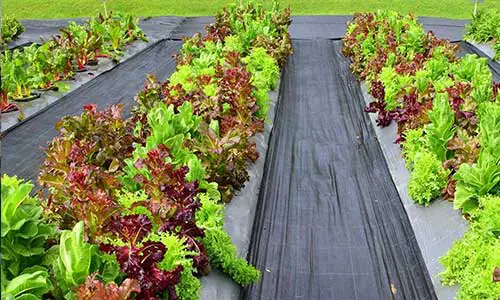
To install the weed barriers, you will need a few tools in addition to the cloth and ground cover. Your task will be made much easier if you sort these items in advance.
Here are the main components you’ll need to attach a privacy screen to the fence-
- Plants (optional)
- Landscape fabric
- Mulch or other ground covers (optional)
- Landscape fabric staples
- Hammer
- Garden hoe
- Utility knife
- Steel rake
Steps to Lay Weed Barrier for a Vegetable Garden
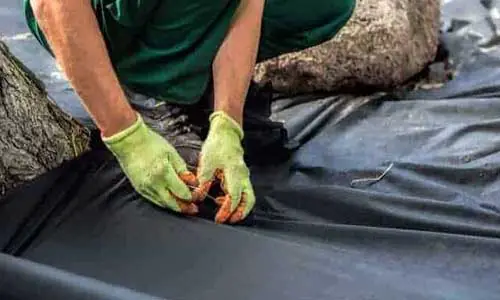
Step 1:
Use a garden hoe, shovel, or another digging device to remove all grass, weeds, and other vegetation. Some plants tend to expand even when covered with landscape cloth. Hence, make sure to dig deep enough to reach the roots.
To remove the entire weed, and roots, you must dig into the soil deep. Don’t forget to check if the hoe reaches under the roots.
A broad-spectrum herbicide is an alternative that will destroy the plants. It is crucial to ensure the plants have had enough time to wither. Next, apply the herbicide by the manufacturer’s instructions.
For weeds spread by rhizomes or stolons, it will be tough to get rid of by digging alone. In such instances, experts advise using herbicides frequently.
Step 2:
Raking the area is highly beneficial in landscaping. Using a steel bow rake makes the task way easier.
Sharp things can cause damage to the landscape. For that, remove any weeds and twigs, and stones beforehand. Raise the soil till it’s smooth and flat, discarding rocks and rubbish.
Step 3:
While laying out the landscape fabric, check if it is parallel to the area’s long dimension. You can use a sharp utility knife to cut the material from the roll. That way, you can replace the blade frequently so it is always sharp.
The pieces can be left uncut if desired; it is preferable to have more fabric than not enough.
Make sure the pieces are at least 6 inches apart if you need to use more than one row of cloth. Despite claims to the contrary from fabric makers, 6 inches is preferable.
Attaching the fabric demands some special care. In some cases, the fabric has different sides. With one shining and one dull side of the fabric, ensure laying the right side facing up.
If required, you can use stones or other heavy objects to temporarily weight the fabric down.
Step 4:
Once you are happy with the fabric placement, you can now secure them in place. While fastening the cloth with landscape fabric staples, we recommend using a hammer. Small hand mauls will do the job as well.
Place a staple every ten feet or so along the edges and seams. The measurement may vary over the internal spaces.
If you are concerned with holding the fabric down, you can use a ground cover. You can cut the fabric at the edges if necessary.
Step 5:
If you’re adding plants, cut an X in the landscape fabric with a pair of scissors or a utility knife for each plant.
Now, it’s time to make incisions in the fabric. As you move from the edges to the middle, make sure the slits are big enough for the plant’s root ball. The fabric will hold up better if you make fewer, smaller holes in it.
To dig the hole, pull the flaps apart. Avoid dumping the soil on the nearby cloth. Instead, we recommend using a wheelbarrow or container.
Finally, it is time to install the plant. After installation, lightly tamp the soil around the root ball to remove any air pockets. To cover the soil, place the four cloth flaps securely up against the base of the plant.
And you are done!
Concerns Related to Weed Barrier Installation for a Vegetable Garden
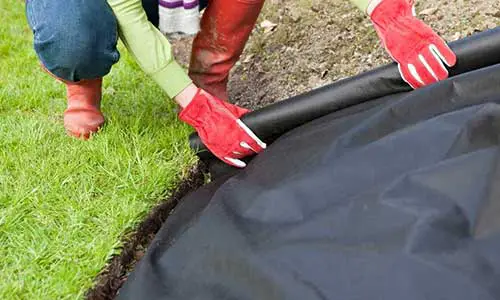
Moisture cannot penetrate surface barriers, particularly plastic ones. For that, we recommend installing drip irrigation lines before laying the barrier.
This will allow water to enter the soil through the planting hole in the barrier. As a result, water can reach the base of the plant easily.
Vegetables will wither away if the soil is allowed to dry out. Barriers that are just on the surface might be ugly.
Barriers made of plastic and cardboard can be hidden by laying down mulch made of straw or another more enticing substance.
In addition to weed control, secondary mulch also aids in soil temperature maintenance.
Can I make customization in the landscaping fabric?
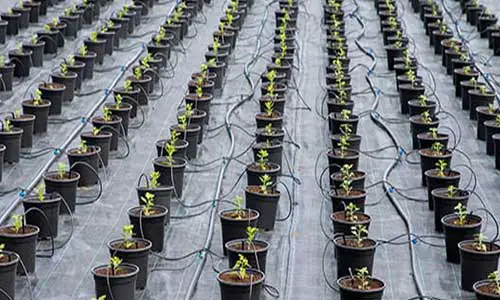
Yes. Heavy duty or thin, you can customize both kinds of landscaping fabric. Instead of using hands, we recommend using scissors or a utility knife. That way, you will get precise cuts.
What is the longevity of landscaping fabrics?
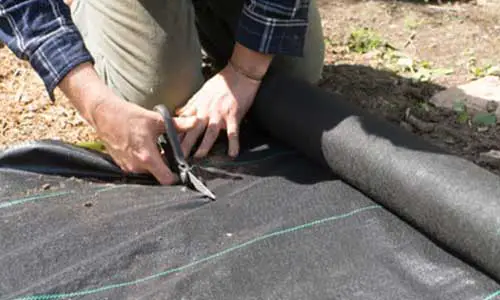
The lifespan of the landscape fabric is based on how well-made it is. Cheap materials rip quickly.
If properly maintained, thin landscape cloth will last for a few months to a few years. Several years to a decade or more are the typical lifespans of heavy-duty landscaping fabrics.
Is weed removal necessary before installing landscaping fabric?
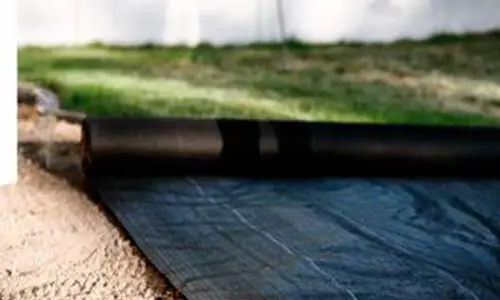
For the best results, we recommend removing weeds and unwanted vegetation before laying the landscape fabric.
If weeds are not eliminated, resilient weeds may push through the material. That might harm your landscaping in the long run.
What materials are used to make weed barriers in landscaping?
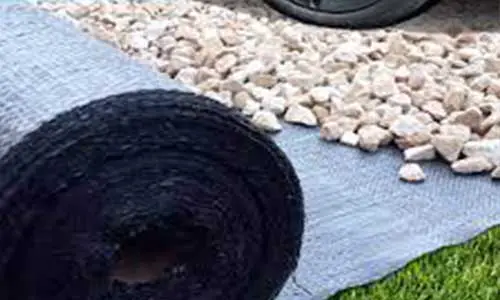
Polyester or polypropylene spun or woven fabric is the most popular type of landscape fabric. Although it doesn’t permit the passage of water or nutrients to the plants, plastic is also frequently used.
Is it necessary to replace the landscape fabric?
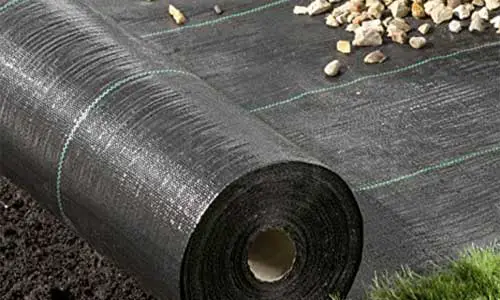
Yes. You should replace the fabric when there are noticeable rips or deterioration in some spots. Other than that, it should be replaced every couple of years. Nevertheless, the product needs to be replaced if it is no longer successfully suppressing weeds.
How frequently should I replace the landscape fabric?
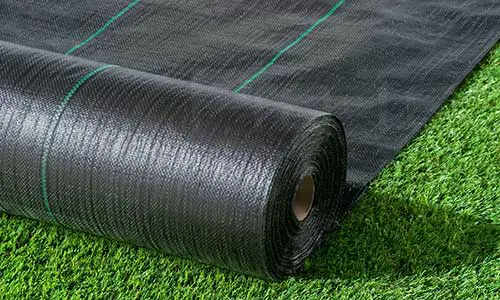
The landscape fabric doesn’t need to be replaced as long as it is still functional and intact. However, changing the landscape fabric every two to three years is normal.
How do you stop weeds from penetrating landscape fabric?
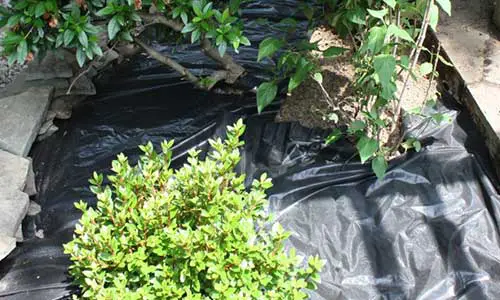
To keep the landscaping fabric in place, add mulch or boulders on top and let them settle. The barriers stop weed seeds from germinating and taking root in the soil.
Furthermore, it prevents weeds from undergoing photosynthesis and developing further.
How to Install Landscape Fabric Like a Pro
Final Words
Compared to conventional approaches like chemical, or organic mulch, weed barrier cloth is more effective. Yet, the weed barrier cannot prevent the growth of weeds, particularly Bermuda grass species.
Before placing the weed barrier fabric, make sure to completely eradicate weeds. Assuring a routine removal of weeds from surroundings is helpful as well. And we will be good to go.
Happy gardening!

David, the founder of The Garden Fixer, started with a passion for gardening in 2012. He has continued his passion for gardening and desire to improve his skills and wanted to share his journey and helpful knowledge with other like-minded individuals.
He launched The Garden Fixer as an outlet for those interested in learning more about Gardening in hopes they can take what they learn and apply it for themselves!
